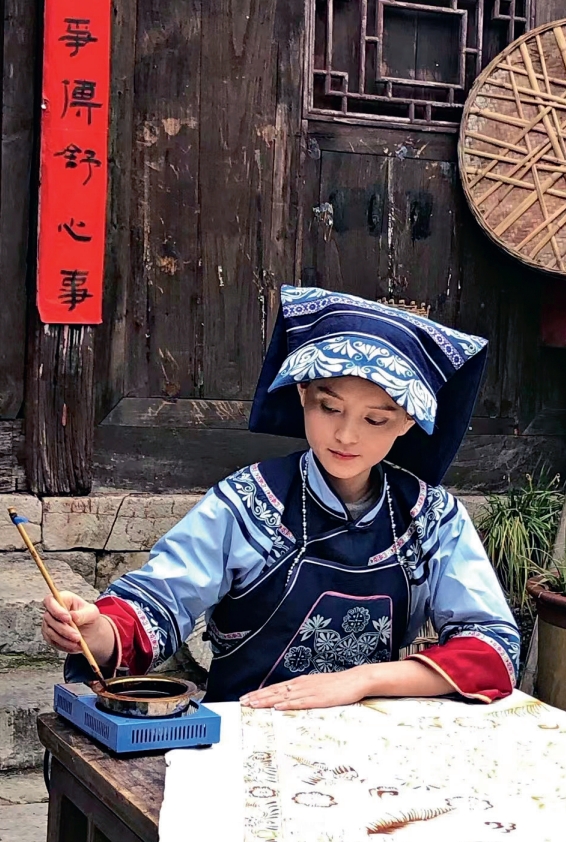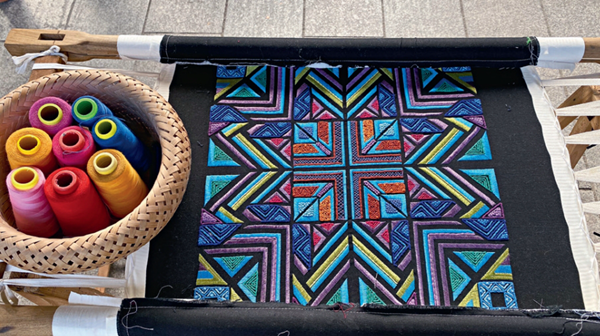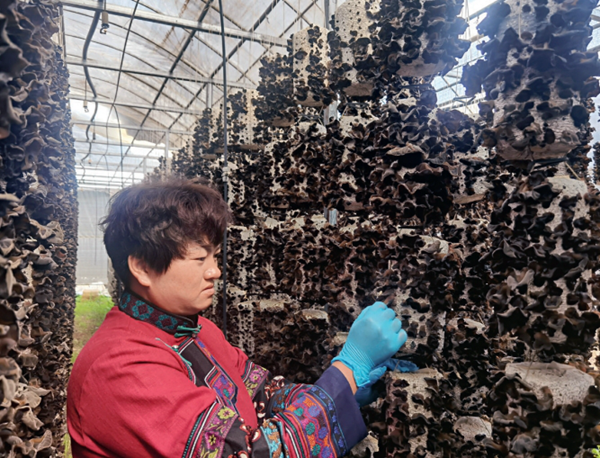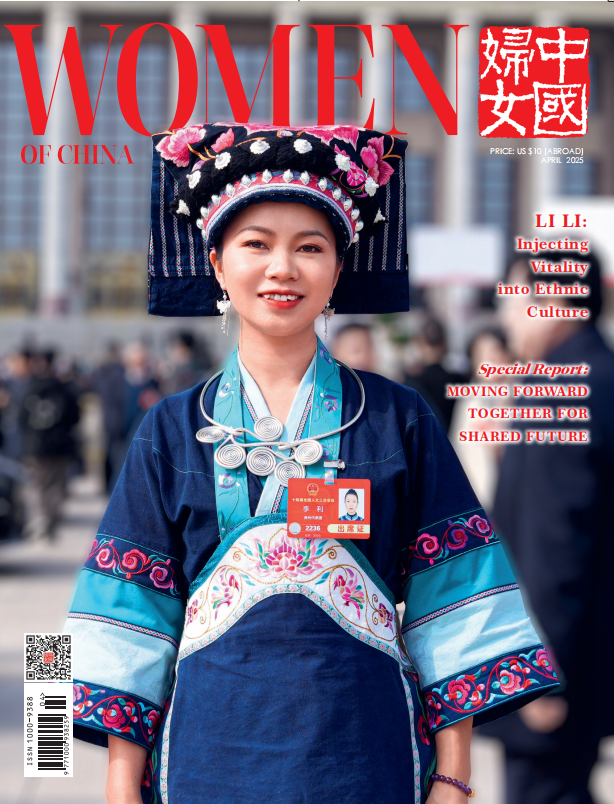Program Empowers Women in Business, Daily Life

Ran Guangjin, an art teacher, was fascinated by Fengxiang dyeing when she learned about the traditional craft in 2012. In fact, she was so fascinated that she dreamed of inheriting and promoting the unique craft. Fortunately for Ran, with support from dōTERRA China Helping Hands Program, she realized her dream.
In 2018, dōTERRA China and China Women's Development Foundation (CWDF) launched dōTERRA China Helping Hands Program. The program's purpose is to empower women who want to start a business, especially in a rural area, by providing startup capital and skills training. Ultimately, the program is to help women become economically independent, and to improve their quality of life.
"When we choose which projects to support, we give priority to those relevant to crafts that are listed among the nation's intangible cultural heritage, because such projects can both help protect traditional culture and enable rural women to work at home and earn more income. We also prefer projects that can help ease rural residents' burdens. Agriculture is the foundation for a country's development. We always believe rural women are able to be leaders in the development of ecological agriculture, and that women are an indispensable force in rural revitalization," a representative of dōTERRA China told media.
The dōTERRA China Helping Hands Program has supported 26 women's entrepreneurship projects in 10 provinces, municipalities or autonomous regions, including Yunnan, Guizhou and Guangxi. More than 4,000 women have benefited from the program.
Inheritance
Ran, a native of Huishui, a county in Qiannan Bouyei and Miao Autonomous Prefecture, inSouthwest China's Guizhou Province, studied traditional Chinese painting in university. Before she started her own business, she had been a teacher with Guizhou Forerunner College.
Fengxiang dyeing is a traditional printing and dyeing technique used by people in Huishui. People mix resin from liquidambar (a kind of deciduous tree with leaves that turn red in the autumn) trees with buffalo fat to produce a special oil. Then, they use the oil to draw patterns on cloth with brushes.
After they are dyed and boiled, the cloths turn blue, with white patterns. The technique has been listed among the representative items of national-level intangible cultural heritage. After Ran mastered the Fengxiang dyeing technique, she decided to develop and promote the craft. She resigned from her teaching job, and she established her company in 2017.

The process to make the special oil used in Fengxiang dyeing is complicated. As no one sold the oil in the market, Ran had to learn how to make the oil by herself. She visited many craftspeople, and she tried many times to make the oil. Eventually, she mastered the skill of making the oil.
Ran has taken every opportunity to promote Fengxiang dyeing. In 2018, she demonstrated the technique during the 14th China (Shenzhen) International Cultural Industries Fair. Sales of her products, which combined traditional and modern elements, reached 100,000 yuan (US $14,286) during the event.
Ran has taught the Fengxiang dyeing technique to students and rural women, for free, to cultivate talents in the industry. Her company employs women skilled in Fengxiang dyeing, and the women can produce related items in either workshops or in their homes. The company has provided job opportunities to 200-plus women, and it has trained 1,000 people.
Since 2018, Ran has taught the Fengxiang dyeing technique to 600 students during various activities to promote the craft. "Even though the students may not engage in work related to Fengxiang dyeing in the future, I will continue my teaching. It will be a success, as long as one of the students become an inheritor of the craft," Ran says.
Getting Rich, Together
Creating a better life for herself, and for her fellow women, is the dream of Zhang Shulan, director of the women's committee of Suoyishan Village, in Shilin Yi Autonomous County, in Southwest China's Yunnan Province. Since 2014, Zhang has led women in growing fungus to realize her dream.

Due to draught and desertification, residents of Suoyishan had to depend on corn crops to earn their meager incomes. In 2014, Zhang decided to start a fungus-growing business. During the following three years, she accumulated experience, and she saw the opportunity to help women become rich by growing fungus.
Because fungus planting requires a little manual work, and the production is seasonal, it is a good option for rural women. Zhang wanted to expand the fungus production, so more women in the village could get involved. However, she lacked the required capital. In 2018, with the help of CWDF and Shilin Women's Federation, she received support from dōTERRA China Helping Hands Program. With startup capital provided by the program, Zhang and 10 other women established a fungus-planting cooperative. In 2019, the cooperative rented 20 mu (1.3 hectares) of land, on which eight greenhouses were built for fungus crops. Now, the cooperative has 68 members.
Zhang hopes the cooperative will provide members with the technologies and raw materials needed for production, and that it will lead its members to prosperous lives.
Source: China Women's Development Foundation
(Women of China English Monthly September 2023 issue)
Please understand that womenofchina.cn,a non-profit, information-communication website, cannot reach every writer before using articles and images. For copyright issues, please contact us by emailing: website@womenofchina.cn. The articles published and opinions expressed on this website represent the opinions of writers and are not necessarily shared by womenofchina.cn.








.jpg)

 WeChat
WeChat Weibo
Weibo 京公网安备 11010102004314号
京公网安备 11010102004314号